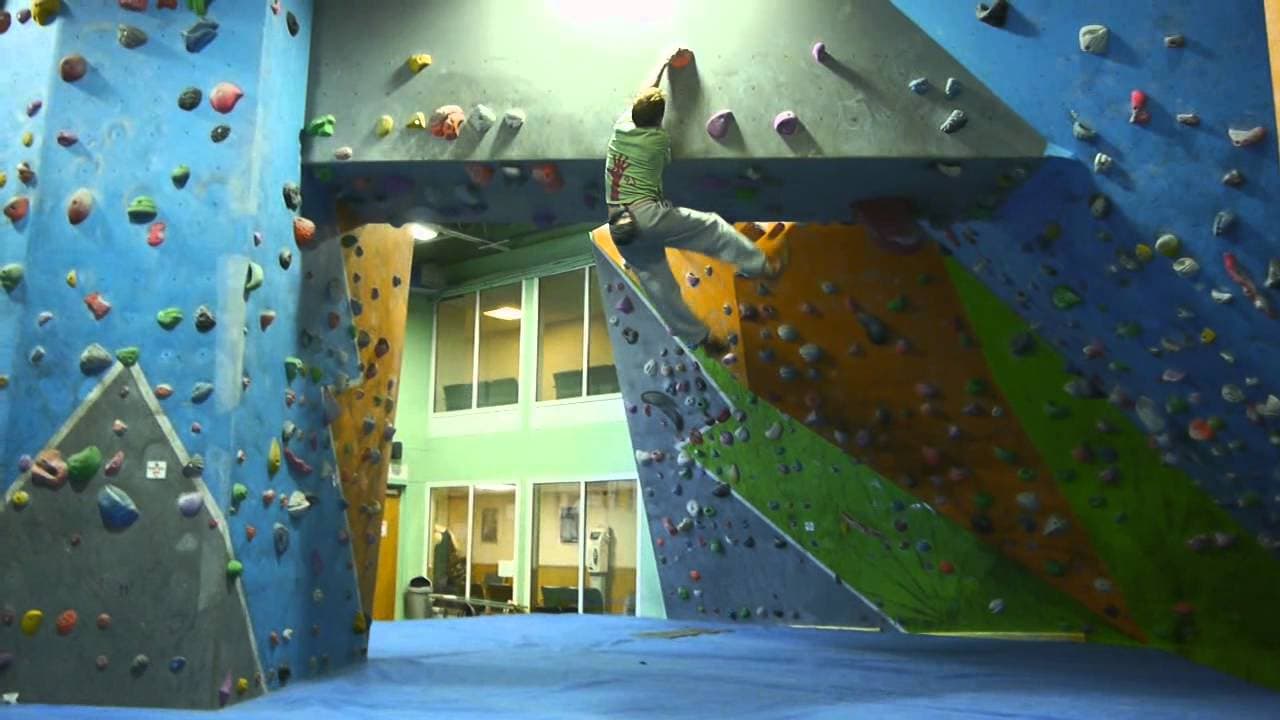Go for a climb
The indoor climbing (bouldering) wall at Kelsey Kerridge is one of the most popular facilities in the centre. A stream of visitors climb regularly on the extensive wall space. The climb routes are continuously refreshed [every six weeks] and there are always staff members on hand to help beginners and more experienced climbers get the most from their bouldering experience. If you climb regularly, you are leading a trend, with climbing set to be a new sport at the Tokyo Olympics in 2020. Expect a whole new generation of budding mountaineers to be taking to the walls soon!
The climbing wall at Kelsey Kerridge comprises more than 200m² surface area to climb upon. There are a huge variety of angles and shapes, including a 40 degree overhanging barrel, arch and multi-faceted features. There is also a campus board, a pull-up bar and finger boards. Would-be mountain goats have everything they need to hone their skills.
While you can pay simply to use the climbing wall, unlimited use of the climbing wall, along with the gym facilities and classes is all included in the Kelsey Kerridge ‘gold membership’. If you are serious about incorporating the fitness benefits of a regular climb into your work-out schedule, this is a great membership package.
Climbing/bouldering provides fantastic fitness benefits in its own right. Climbing calls for great all over body strength, immense levels of muscular endurance and high levels of flexibility. To climb well also takes deep levels of concentration and ability to problem solve. In other words, it provides a fantastic physical and mental workout.
These are the key areas that climbing fitness sessions will improve:
Cardiovascular fitness
During a session of climbing, you will boost your heart rate, build muscle and develop stamina. The upper body strength required for climbing is a given for pulling oneself up. Legs and core muscles work as you push up the wall face and find balance. According to a 1997 study published in the British Journal of Sports Medicine, the cardio and energy consumed in climbing is similar to running at a pace between 8 and 11 minutes per mile.
Strength and muscle tone
Climbing requires several different muscles groups to be engaged during the workout. Abs, obliques, deltoids, traps, biceps, lats, quads, calves – climbing even works your forearm muscles by strengthening a climber’s grip. A review in the Journal of Human Kinetics in 2011 reported that elite climbers often have lower body mass indexes, lower body fat, and increased handgrip strengths.
Flexibility
Climbing encourages participants to increase their range of motion, because the activity demands increased flexibility. Climbers are often required to reach, leap and climb to handholds and footholds, often from a challenging distance.
Concentration
Mental strength: In bouldering the routes climbers take are called problems – and justly so, as a rock climbing requires problem-solving skills. Navigating routes demands a climber to judge their individual abilities, such as reach, strength required to complete the next step, current energy levels and route planning. Furthermore, rock climbing requires hand-eye coordination necessary for a climber to judge what he or she sees in a crag and how to reach it.
Mental wellbeing
Rock climbing reduces stress by increasing levels of norepinephrine, a neurotransmitter in the body that aids in releasing stress. Climbers often become immersed in the flow of the activity. As they climb they get immersed in the activity, creating a sense of enjoyment and fun.








